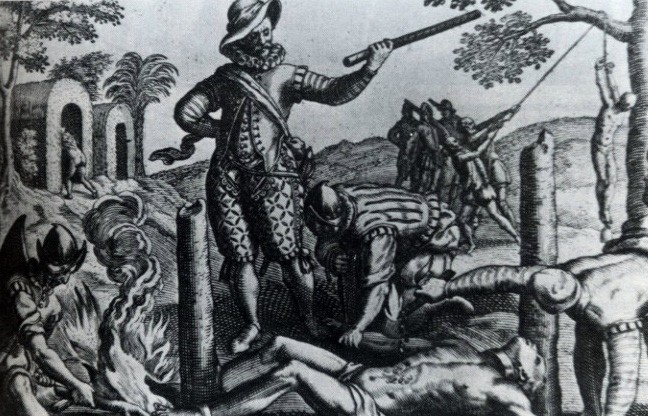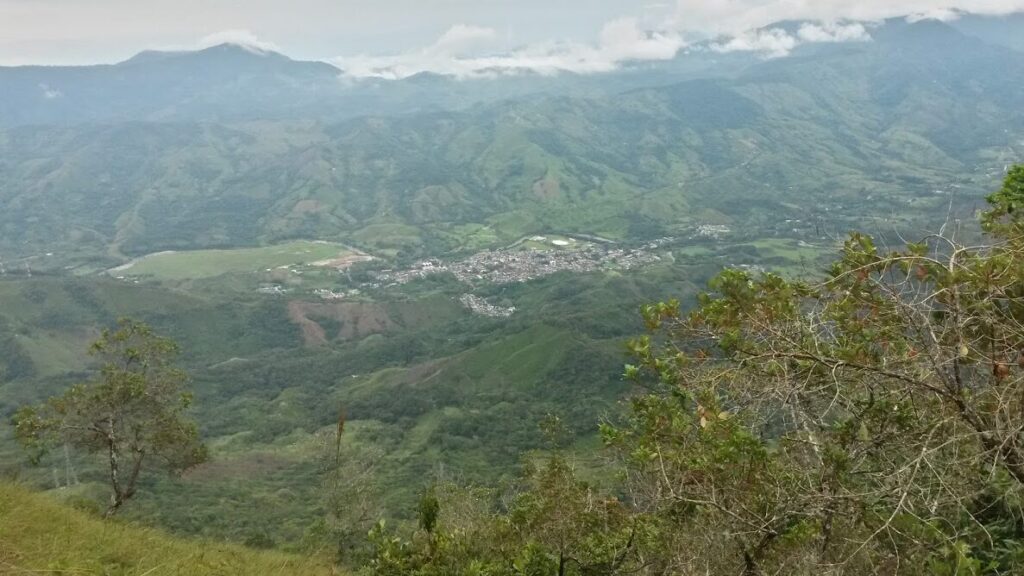History of my town
A few centuries ago, where today is the municipality of San Carlos around the year 1500 is presumed to inhabited the indigenous communities of the Tahamies and Nutabes descendants of the Chibchas populations that populated these areas, being a forced passage to the Magdalena River, since our ancestors San Carlos has had countless signs of wealth.

The Tahamies shared language and culture with the neighboring Nutabe, although they were clearly independent and autonomous from each other. This culture was expressed, economically, by their condition of very prominent farmers, although of rudimentary technology, owners of immense fields of corn, cotton, various fruit trees and beans. They also exploited fishing intensively in our abundant and rich tributaries.
Around 1530, Captain Francisco Núñez Pedroso began the Spanish colonization, suffering great hardships due to the difficult terrain. When he saw how difficult it was to access the mountains of Antioquia, he entrusted Juan Carreño to continue with his expedition, who invaded the lands of the Punchina and Nutabe cacique, reaching the banks of the Nare River.
The territory of San Carlos belonged to the domain of Cacique Punchina, the Spaniards named it the Valle del Corpus Cristi since it was discovered by the dates on which this Catholic holiday was celebrated, due to this invasion the aborigines set fire to houses and then fled , since they did not like the mistreatment of the expeditionaries.

Cuando el capitán Francisco Martínez y su expedición llegaron al Valle del Corpus Cristi y fundaron la población de Nuestra Señora de los Remedios, luego después de 20 años fue trasladada al valle donde hoy se encuentra San Carlos y cambiaron su nombre por Santa María de Ageda, por estos tiempos cuenta la leyenda fue incendiada por María del Pardo, una aguerrida exploradora, que según sus moradores hizo un pacto con el diablo para hacer una extracción de oro y al no cumplir este con el pacto robó las campanas de la iglesia y quemo el pueblo, como represalia.
These rumors of the great wealth of the territory and its beauty were the reason why two captains of the crown arrived in the territory around 1558, Fernando Loyola and Diego de Carvajal, who after confronting each other and having a strong dispute left the territory.

The new town of San Carlos de Priego was founded on the 14th of August 1786 by Francisco Lorenzo de Rivera.
In 1800 the construction of our parish church, known today as Our Lady of Sorrows, began.
The growth and prosperity of the colony lasted until the twentieth century when San Carlos ceased to become the obligatory passage of the Magdalena River to Medellin but also retained its agricultural vocation inherited by the Indians, the development of livestock and the nascent tourism were established as a new livelihood, until the time of displacement.
San Carlos is recognized as the hydroelectric capital of Colombia thanks to the great wealth of its waters that generate 29% of the national energy and for its biodiversity in 2015 is declared as a protected area the Corredor de las Camelias with an area of 12,718.26 hectares belonging to the municipalities of Guatapé, San Rafael , Granada and finally San Carlos that contributes 57.30% of the total protected area, for being biodiverse corridors in the jurisdiction of Cornare, the important thing about this protected area is that it is the natural corridor of the cougar; in addition to one of the birds in danger of extinction, such as the cacique candela, the river otter; the meliponas bee, a species that has no sting, does not sting and can be kept in the farms of the farmers, where they can work them and extract their honey, which has medicinal properties, hence the importance that the farming families settled in this area receive a fair price for their crops so that they can be caretakers of this wealth that we are proud to have.




